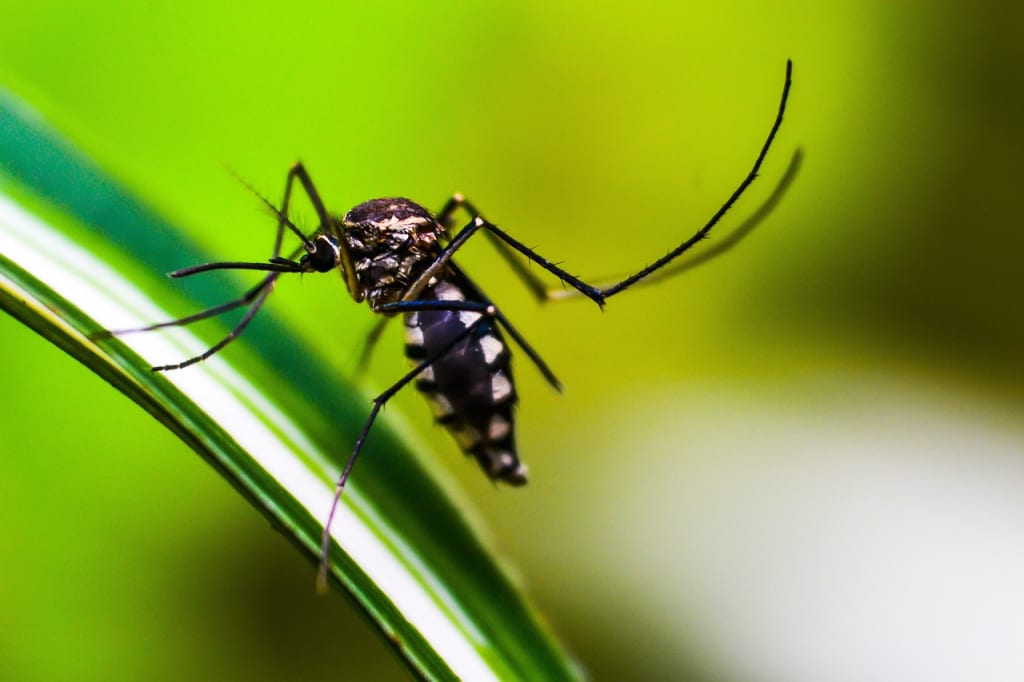Iran Identifies 63 New Dengue Fever Cases, Declaring it Top Health Crisis
Iran Declares Dengue Fever Its Top Health Crisis After Identifying 63 New Cases

Introduction
Iran is currently grappling with a significant health crisis as it identifies 63 new cases of dengue fever, a mosquito-borne viral disease. This alarming development has prompted health authorities to declare dengue fever the top health crisis in the country. The spread of dengue fever in Iran reflects broader global public health challenges associated with vector-borne diseases, which are exacerbated by factors such as climate change, urbanization, and global travel.
What is Dengue Fever?
Dengue fever is a viral infection transmitted primarily by Aedes mosquitoes, particularly Aedes aegypti and Aedes albopictus. These mosquitoes are commonly found in tropical and subtropical regions around the world. The virus responsible for dengue fever belongs to the Flavivirus genus and includes four distinct serotypes (DENV-1, DENV-2, DENV-3, and DENV-4). Infection with one serotype provides lifelong immunity to that specific serotype but not to the others, making multiple infections possible.
The symptoms of dengue fever can range from mild to severe and typically appear 4-10 days after being bitten by an infected mosquito. Common symptoms include high fever, severe headache, pain behind the eyes, joint and muscle pain, rash, and mild bleeding. Severe cases can progress to dengue hemorrhagic fever (DHF) or dengue shock syndrome (DSS), which can be fatal if not treated promptly.
The Emergence of Dengue Fever in Iran
Iran has not traditionally been considered a hotspot for dengue fever, but recent trends indicate a shift. The identification of 63 new cases marks a significant increase and raises concerns about the country's ability to manage and contain the disease. Several factors contribute to the emergence and spread of dengue fever in Iran:
Climate Change: Rising temperatures and changing precipitation patterns create favorable conditions for the proliferation of Aedes mosquitoes. Warmer climates accelerate the mosquito life cycle and increase their breeding rates, leading to higher mosquito populations and, consequently, greater transmission of dengue virus.
Urbanization: Rapid urbanization and population growth result in crowded living conditions with inadequate infrastructure, including poor waste management and lack of access to clean water. These conditions create breeding grounds for mosquitoes in stagnant water found in containers, discarded tires, and poorly maintained urban environments.
Global Travel: Increased international travel facilitates the spread of infectious diseases. Travelers from dengue-endemic regions can introduce the virus to new areas, and infected individuals can carry the virus across borders, leading to local transmission when they are bitten by local Aedes mosquitoes.
Lack of Awareness and Preventive Measures: In regions where dengue fever is not traditionally endemic, there may be limited awareness among the public and healthcare providers about the disease. This lack of awareness can delay diagnosis and hinder effective prevention and control measures.
Public Health Response
The Iranian Ministry of Health has declared dengue fever the top health crisis in the country, signaling the severity of the situation and the need for immediate action. The public health response to this crisis involves several key components:
Surveillance and Monitoring: Enhancing surveillance systems to detect and monitor dengue cases is crucial. This includes training healthcare workers to recognize the symptoms of dengue fever and report suspected cases promptly. Improved diagnostic capabilities, such as rapid diagnostic tests (RDTs) and polymerase chain reaction (PCR) testing, are essential for accurate and timely diagnosis.
Vector Control: Controlling the mosquito population is a primary strategy for preventing the spread of dengue fever. This involves eliminating mosquito breeding sites by properly disposing of waste, covering water storage containers, and using larvicides to treat standing water. Additionally, community-based vector control initiatives, such as public education campaigns and community clean-up efforts, can significantly reduce mosquito habitats.
Public Awareness Campaigns: Educating the public about dengue fever, its symptoms, and preventive measures is critical. Awareness campaigns can inform people about the importance of using mosquito repellents, wearing protective clothing, and using mosquito nets. Public health authorities can also provide guidance on recognizing potential breeding sites in and around homes.
Emergency Preparedness: Developing and implementing emergency response plans to manage outbreaks is essential. This includes ensuring that healthcare facilities are equipped to handle an influx of dengue patients and providing training for healthcare workers on the management of severe dengue cases. Stockpiling essential medical supplies, such as intravenous fluids and blood products, is also necessary to respond effectively to severe cases.
International Collaboration: Collaborating with international health organizations, such as the World Health Organization (WHO) and the Centers for Disease Control and Prevention (CDC), can provide valuable expertise, resources, and support in managing the dengue crisis. Sharing data and best practices with other countries facing similar challenges can enhance the effectiveness of response efforts.
Challenges and Obstacles
Addressing the dengue fever crisis in Iran involves several challenges and obstacles that must be overcome:
Resource Constraints: Limited financial and human resources can hinder the implementation of comprehensive surveillance, vector control, and public health education programs. Ensuring adequate funding and staffing is essential for an effective response.
Cultural and Behavioral Factors: Cultural beliefs and practices may influence individuals' willingness to adopt preventive measures. Tailoring public health messages to align with cultural norms and values is important for promoting behavior change.
Infrastructure Limitations: Inadequate infrastructure, such as poor waste management systems and lack of access to clean water, can perpetuate mosquito breeding and disease transmission. Addressing these underlying infrastructure issues is critical for long-term disease prevention.
Climate Variability: Climate change poses an ongoing challenge, as changing weather patterns can alter the distribution and abundance of Aedes mosquitoes. Predicting and adapting to these changes requires continuous monitoring and research.
Cross-Border Transmission: Iran shares borders with several countries, making it vulnerable to cross-border transmission of dengue fever. Coordinating efforts with neighboring countries to prevent the spread of the disease is essential for regional control.
Global Contex
The dengue fever crisis in Iran is part of a broader global trend of increasing vector-borne diseases. According to the World Health Organization, the incidence of dengue has increased 30-fold over the past 50 years, with an estimated 390 million dengue infections occurring annually worldwide. Several factors contribute to this global trend:
Urbanization and Population Growth: Rapid urbanization and population growth, particularly in tropical and subtropical regions, create environments conducive to mosquito breeding and disease transmission.
Climate Change: Climate change is expanding the geographic range of Aedes mosquitoes, leading to the emergence of dengue in previously unaffected areas. Warmer temperatures and changing rainfall patterns create favorable conditions for mosquito breeding and virus transmission.
Global Travel and Trade: Increased global travel and trade facilitate the movement of people and goods, including mosquitoes and viruses. This increases the risk of introducing dengue to new areas and exacerbates the spread of the disease.
Inadequate Vector Control: In many regions, vector control efforts are insufficient to effectively manage mosquito populations. This is often due to limited resources, lack of political will, and competing public health priorities.
Public Health Infrastructure: Weak public health infrastructure and limited access to healthcare services can hinder the detection, diagnosis, and treatment of dengue fever. Strengthening healthcare systems and improving access to care are essential for effective disease management.
Conclusion
The identification of 63 new dengue fever cases in Iran highlights the urgent need for a comprehensive and coordinated public health response to address this growing health crisis. Climate change, urbanization, and global travel are contributing to the spread of dengue fever in Iran and other regions around the world. Effective surveillance, vector control, public awareness campaigns, emergency preparedness, and international collaboration are essential components of the response.
Addressing the dengue fever crisis in Iran requires overcoming significant challenges, including resource constraints, cultural and behavioral factors, infrastructure limitations, climate variability, and cross-border transmission. By implementing targeted and sustained interventions, Iran can mitigate the impact of dengue fever and protect the health and well-being of its population.
Furthermore, the dengue fever crisis in Iran underscores the importance of global efforts to combat vector-borne diseases. Strengthening public health infrastructure, enhancing vector control measures, and addressing the root causes of disease transmission, such as climate change and urbanization, are critical for reducing the burden of dengue fever and other vector-borne diseases worldwide.





Comments
There are no comments for this story
Be the first to respond and start the conversation.